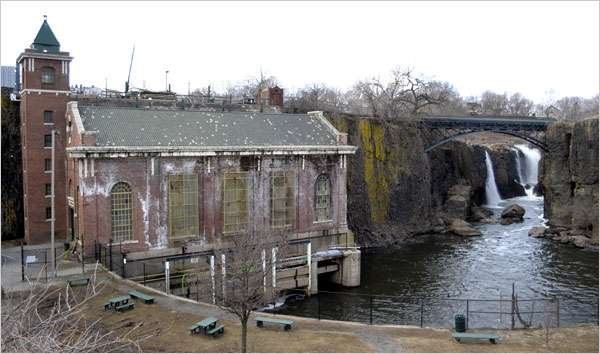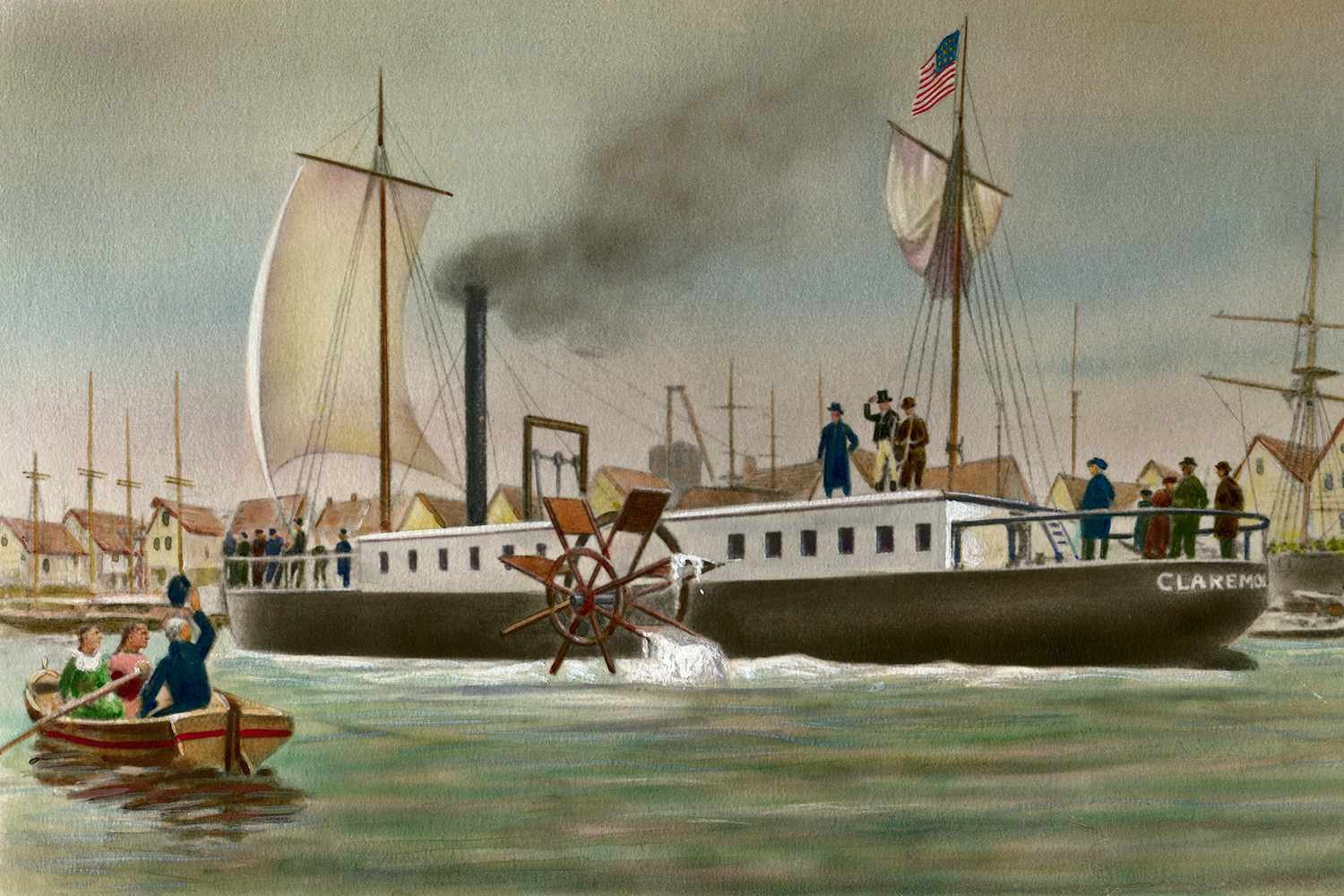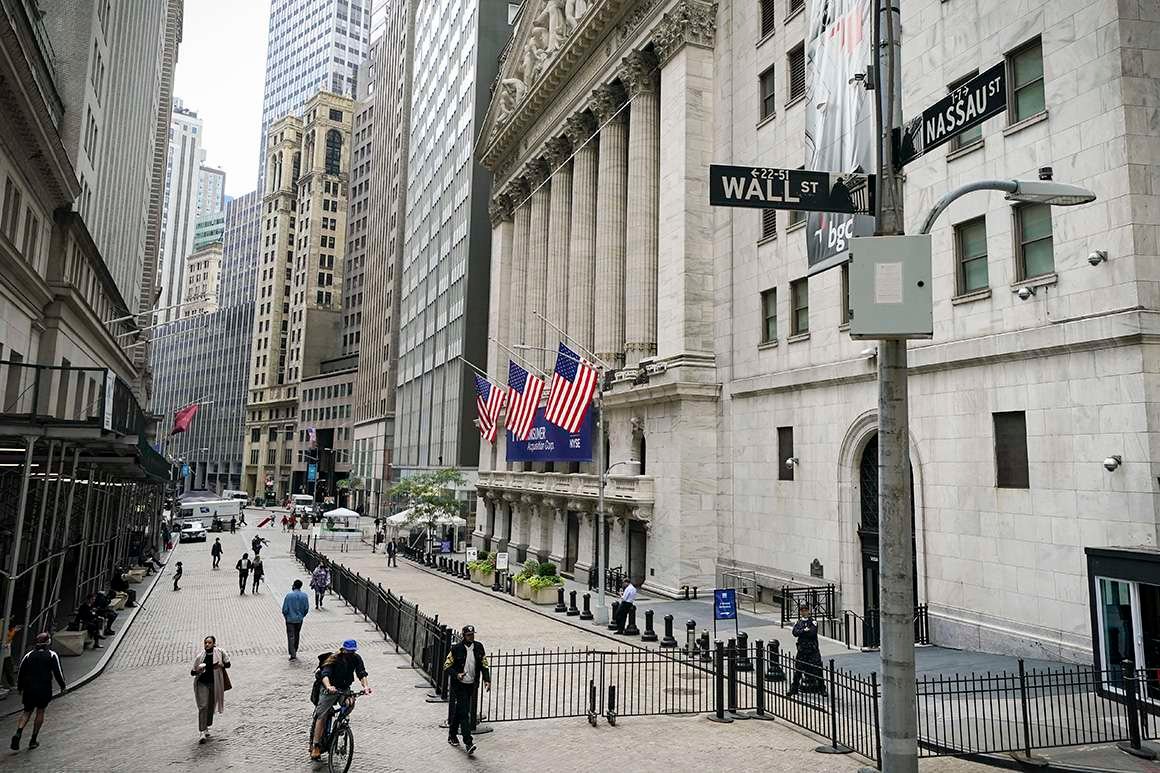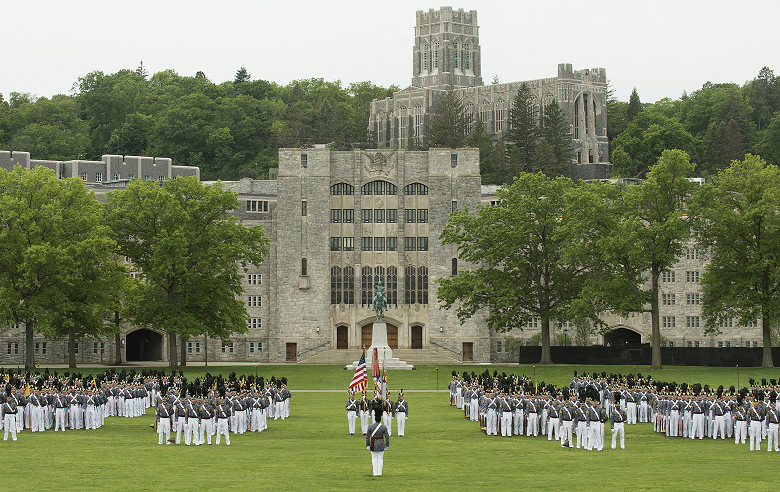I worked on Wall Street and lived in Battery Park, in Lower Manhattan, overlooking the Hudson River and located across the street from the World Trade Center. Upon moving there, I walked around Lower Manhattan and came upon the little cemetery of Trinity Church, at the foot of Wall Street. Looking at the tombstones of prominent New York leaders of the American Revolution, I chanced upon a modest grave stone that stopped me in awe – I was looking at the grave of Alexander Hamilton.
Alexander Hamilton, Benjamin Franklin, and George Washington developed an economic program that built the U.S. as the greatest industrial nation with the highest standard of living in history.
The Franklin-Hamilton-Washington economic model was not only the basis for building the U.S. economy, but the economic plan was used by almost every independent nation in the world for economic development and industrialization. Several nations used the Hamilton plan including Prussia/ Germany under Otto von Bismarck, China led by Sun Yat-Sen, Russia led by Count Sergei Witte, Japan under Emperor Meiji, Mexico under Benito Juarez, Ireland under Arthur Griffith, and others such as India, Australia, Sweden, Italy, Brazil, Peru, Columbia, Thailand, and more.

Alexander Hamilton’s grave, Trinity Church, at the foot of Wall Street, Manhattan
Hamilton’s Vision
During the American Revolution, Alexander Hamilton was General George Washington’s most trusted aide and officer. Hamilton led the American and French forces at Yorktown that forced the British surrender. Upon the British surrender, Hamilton told Washington that the young American nation would need to use the French economic model of Jean-Baptiste Colbert (1619-83), who built France as an industrial power. (Ellis, Chernow, Fleming).
George Washington

George Washington (1732-1799) a Virginia planter was the first President of the U.S. 1789-1797 and was the Commanding General of the Continental Army 1775-1783, which forced the British surrender in 1781. Washington was a member of the “Secret Committee” that ran the American Revolution. Washington was president of the Constitutional Convention of 1787 which drafted the U.S. Constitution.
The Washington administration focused primarily on the Franklin-Washington-Hamilton economic program for the new nation. The first administration included Vice President John Adams, Secretary of State John Jay then later Thomas Jefferson, Secretary of Treasury Alexander Hamilton, Secretary of War Henry Knox, Attorney General Edmund Randolph, and diplomats James Monroe, Charles Pinkney, and Thomas Pinkney. He appointed John Jay as Chief Justice of the Supreme Court with 8 other Justices, along with 28 District Justices.
The Washington administration stabilized and strengthened the economy, established public credit and banking, reorganized the public debt, expanded and developed Western territories, limited the Atlantic slave trade, implemented internal improvements (roads, canals, ports, bridges, dams, etc.), built the Army and Navy, promoted manufacturing-inventions-education-arts-science, established the District of Columbia and the Bank of the United States, and established peace with foreign powers and Native American tribes.
Alexander Hamilton

U.S. Treasury Building with Hamilton’s statue in front, Washington DC
Alexander Hamilton was considered a genius, leader, hero, honest, and honorable by his contemporaries. He was charismatic, confident, strong willed, assertive, competitive, outspoken, and controversial – either loved, feared, or hated. He was a self-made and self-educated entrepreneur, banker, lawyer, military officer, statesman, economist, and manufacturer. He was similar to his mentors Franklin and Washington who also rose to wealth and greatness by their own merits. Hamilton helped to popularize the new Constitution by writing The Federalist Papers with James Madison, John Jay, and Tenche Coxe. Upon the ratification of the Constitution in 1788, Franklin and Hamilton stood with a few others and launched a fight to abolish the institution of slavery. (Ellis, Chernow, Fleming).
The breakthrough economic policies of Hamilton fundamentally transformed the world and created modern industrial capitalism. He established American banking, large scale commercial manufacturing, national credit system, U.S. Mint, West Point military academy, Columbia University, U.S. Coast Guard (Cutter Service), financial exchange markets, and Wall Street.
Hamilton’s key allies for public credit and industrial development were (* denotes signer of the U.S. Constitution) President George Washington*, Benjamin Franklin*, Vice President John Adams, publisher Mathew Carey, Chief Justice John Jay, Chief Justice John Marshall, Superintendent of Finance Robert Morris*, Senator Gouveneur Morris*, Senator Rufus King*, Representative Fisher Ames, Secretary of State Timothy Pickering, Secretary of War James McHenry, Secretary of Treasury Oliver Wolcott, Jr., Tench Coxe Assistant Secretary Treasury, Michael Hillegas Continental Congress Treasury, George Clymer* Continental Congress Treasury, Chief Justice James Wilson*, Gen. Philip Schuyler, Judge Richard Morris, NYC Mayor James Duane, Judge Robert Troup, William Jackson Constitutional Secretary, William Duer Assistant Secretary Treasury, NY Chancellor Robert Livingston, Sen. Theodore Sedgewick, Rep. William L. Smith, and others.
As Secretary of Treasury in the George Washington administration, Hamilton submitted to Congress three significant U.S. Treasury reports: “Report on Credit” (1790), “Report on a National Bank” (1790), and “Report on Manufactures” (1791).
The Hamilton Plan was a political-economic model for industrial capitalism, the real productive economy of manufacturing, agriculture, infrastructure, technology, transportation, communication, healthcare, services, credit, jobs, education, and standard of living. Called “The American System”, it is distinct from the British classical monetarist economists of Smith, Malthus, Ricardo, Mill, Keynes, etc.; as well as the socialists Marx, Luxemburg, et al. The monetarists located value in exchange rates, rent, debt interest, assets, and taxes; to them wealth is something to acquire and accumulate. Industrial capitalism located true value in the increase of the productive capability of the real economy and the creative ‘power of labor’; capitalism creates wealth. Hamilton wrote: “To cherish and stimulate the creativity of the human mind is by which wealth of a nation may be promoted.” (Sources: Hamilton, Mathew Carey, Frederick List, Daniel Raymond, Henry Carey).
Hamilton’s Manufacturing

Hamilton’s factory, Paterson, New Jersey
The Treasury Report on Manufactures, 1791: Hamilton made an historical breakthrough in economics on how to build an industrial economy. The Report was a master plan to ensure the economic development, self-sufficiency, and independence of the young United States. Hamilton’s premise was that to develop the economy the state must foster both public and private capital for: 1) capital investment in industry, agriculture, infrastructure, science, technology, communication, transportation, etc.; 2) capital investment into “the productive value of labor” through skills training, education, arts, culture, social services, health, sanitation, security, etc.; and 3) combined, the two foster innovation, knowledge, and social surplus (profit) for re-investment.
Hamilton and Washington launched the American industrial revolution, bringing about: financial credit, currency, tariffs, foreign trade, patents, a vast network of canals for commerce, highways, bridges, ports, steamboats, utilities, high pressure steam boilers, railroads, automated factories, industrial engineering, machine tools, and industrial forging and fabrication.
Hamilton formed the Society for Establishing Useful Manufactures in 1791 in Paterson, New Jersey, with partners Tench Coxe, William Duer, and Philip Schuyler. The company produced textiles, silk, iron, steel, fabricated parts, steam engines, machine tools, munitions, and locomotives.
The Washington-Hamilton economic policies evoked a wave of American innovation, invention, and industrial entrepreneurship.
James Ramsey (1743-92) was an engineer recruited by Franklin and Washington to develop a steamboat. He mentored Robert Fulton.
John Stevens (1749-1838) a member of the American Philosophical Society who worked with Ramsey and Evans on steam engines. Stevens framed U.S. patent law in 1790. He
designed ironclad ships for the Navy and built the first steam railroad locomotive 1824.

America’s first steam locomotive
Oliver Evans (1755-1819) was a pioneer in manufacturing and steam engines who developed over 80 inventions. He formed the Pittsburgh Steam Engine Company and the Mars Works machine tool industrial complex in Philadelphia, with other factories in Pennsylvania, Virginia, and North Carolina. Some of his inventions include: a fully automated flour mill in 1791, a high pressure steam engine in 1801, a steam powered automobile in 1804, steam boats, refrigeration, automated bakeries, city gas lighting, and others.

Robert Fulton’s steamboat
Robert Fulton (1765-1815) mentored by Ramsey and sponsored by Franklin and Robert Livingston. In 1807, Fulton built a steamship line on the Hudson River between New York City and Albany. He soon had 21 steamboats on the river.
Eli Whitney (1765-1825) inventor of the cotton gin in 1793 that revolutionized cotton production. In 1798 he began musket production with interchangeable parts which allowed mass milling production. Whitney developed a milling machine in 1818.
Samuel Slater (1768-1835) brought British cotton textile mill technology to the U.S. and established the first textile mill in the U.S. in 1789. He built 13 mills in Massachusetts, Connecticut, New Hampshire, and Rhode Island.
Hamilton’s Banking and Credit

New York Stock Exchange, Wall Street, Manhattan
The Treasury Report on Credit, 1790: Hamilton advocated that the U.S. government establish national public credit for individuals, farmers, and businesses; to establish credit among foreign investors and attract foreign capital to invest in America’s future; to assume the American Revolution national debt and pay full redemption to creditors in-order to establish confidence in the new government; and to establish revenues, duties, tariffs, and taxes.
The Report on a National Bank, 1790: Hamilton advocated the establishment of a National Bank to issue money, monetize the national debt, stabilize the financial system, and provide credit for productive activity in the economy.
American banking began with the American Revolution, prior it was prevented by London banks. Robert Morris founded the Bank of North America which was chartered by the Continental Congress in 1781. Shareholders included Franklin, Thomas Jefferson, Hamilton, Thomas Willing, William Bingham, and Robert Morris.
Alexander Hamilton formed the Bank of New York in 1784. The bank provided the first loan to the U.S. government in 1789. It funded the Erie Canal, steamboat companies, utilities, manufacturing, infrastructure, railroads, the War of 1812, and the Union in the Civil War.
The Hamilton proposed First Bank of the United States was chartered by Congress in 1791. The Second Bank of the United States was chartered by President James Madison from 1816 to 1836. The fight for re-charter in 1836, called the “Bank War”, pitted President Andrew Jackson against Henry Clay, John Quincy Adams, and Nicholas Biddle, the Bank president. Jackson blocked the Bank’s re-charter which drove the nation into an economic depression.
Other early banks included the Massachusetts Bank in Boston in 1794 to fund New England shipping. Founders included John Hancock, Paul Revere, Samuel Adams, and Henry Knox. Aaron Burr formed the Bank of Manhattan in 1799 with stockholders George Clinton, John Jacob Astor, Stephen Von Rensselaer, and Peter Stuyvesant.
Hamilton and the Military

U.S. Military Academy, West Point
In 1787, Gen. Henry Knox, Gen. George Washington, and Gen. Alexander Hamilton formed the Society of Cincinnati, a membership organization of Continental Army and Navy officers who fought in the American Revolution. Soon there were 2,150 members, including 23 signers of the Constitution. The first meeting was led by Hamilton. The Society worked closely with Franklin’s American Philosophical Society. The Society members were active in expanding the West for military defense and the production of arms and munitions. Washington, Hamilton, Lafayette, and others used the Society as the first U.S. intelligence and espionage network organization. Members staffed U.S. foreign offices and embassies.
In 1790, Hamilton formed the U.S. Revenue Cutter Service to defend the U.S. coast and the stop smuggling and piracy. The Service later became the U.S. Coast Guard.
During the “Quasi War” (1798-1800) between the U.S. and Napoleon’s France during the John Adams administration, Adams appointed Washington as U.S. Commander and Hamilton as Inspector General of the Army.
Hamilton proposed the formation of the U.S. Military Academy of West Point, NY. He attended a meeting with Gen. Philip Schuyler and Col. Jonathan Williams to plan the Academy in 1802. Col. Williams was the nephew of Benjamin Franklin and became the first Superintendent of the Academy at West Point. In 1802, Williams also formed the Military Philosophical Society as a center of scientific research and the formation of the Army Corps of Engineers. Military Philosophical Society members included James Monroe, John Quincy Adams, DeWitt Clinton, Robert Fulton, John Marshall, Eli Whitney, and others.
Hamilton’s Anti-Slavery
Hamilton was a founding member of the New York Manumission Society which advocated the gradual abolition of slavery. The Society was formed in 1785 by John Jay with many prominent New Yorkers. Members included Vice President George Clinton, Governor Daniel Thompson, Judge Robert Troup, U.S. Representative Egbert Benson, NY Chancellor Robert Livingston, U.S. Representative Cadwallader Colden, NYC Mayor James Duane, Vice President Aaron Burr, Isaac Hicks, Peter Jay, Gilbert Livingston, Jeremiah Thompson, and others.
Hamilton’s American System, Second Generation

Mathew Carey
Mathew Carey, an Irish revolutionary, immigrated to America from Ireland. He worked as a printer for Benjamin Franklin in Philadelphia and soon became Franklin’s protégé on economics. Carey was a member of the inner circle leadership of the American Revolution. (Sources: Ellis, Chernow, Chaitkin, Salisbury).
Washington, Franklin, and Lafayette sponsored Carey’s publishing company. Carey formed the first American book publisher, Carey & Lea Publishers in Philadelphia. He published the Columbian Magazine and the American Museum Magazine, as well as the books of Washington Irving, James Fenimore Cooper, Edgar Allen Poe, Henry Longfellow, Jane Austen, Walter Scott, Charles Dickens, and others.
After the deaths of Franklin in 1790 and Hamilton in 1804, Carey arose as the leader of what became known as the Hamiltonian “American System of Economics.” He mentored a circle of economists and politicians of the Second American Generation. Carey wrote economic essays and printed the works of Hamilton. In 1822, Carey published his own Essays on Political Economy. (Chernow, Chaitkin, Salisbuy). Carey’s son Henry Carey became a leading world economist and led the Abraham Lincoln economic post-Civil War plan.

First Bank of the United States
The Mathew Carey Circle formed the American System program which promoted rapid economic and industrial growth of the U.S through the following policies:
- tariffs to protect young industries, generate revenue, encourage domestic manufacturing, and free the U.S. from dependence on foreign imports
- federal financing of internal improvements and infrastructure, such as roads, turnpikes, bridges, railroads, ports, canals, transportation, communication
- a strong military and navy
- a national bank to provide a uniform currency, ensure a supply of credit, attract private investors, and a stable financial system
- public land sales and expansion of the frontier
- open foreign markets and exports
- public funded universal education
Members of the Mathew Carey Circle included:
Daniel Raymond (1780-1845), an early American Hamiltonian economist who influenced American System programs. He also influenced the economic theories of Friedrich List and Henry Carey. Raymond’s work focused on national wealth, the productive capacity of the economy. He advocated government development of production and national wealth, and protecting the national interest. His main writings include Thoughts on Political Economy (1820) and Elements of Political Economy (1823).
Friedrich List (1789-1846), German-American economist, influenced by Hamilton and Raymond, developed the “National System” of political economy. He was brought to the U.S. by Lafayette and worked with Mathew Carey before he returned to Germany. List was a leading economist in Germany and his policies were used by Bismarck to industrialize Germany. List wrote that a nation’s true wealth is in the development of its productive power, rather than in exchange values. He proposed that government should develop agriculture, industry, commerce, science, technology, and public education. His main work was The National System of Political Economy, 1841.

Henry Clay
Henry Clay (1777-1852) a Mathew Carey protégé from Kentucky, he was the leader of the American System faction for economic and industrial development, tariffs, the Bank of the U.S., strong military, and internal improvements. Clay was a U.S. Senator, Speaker of the House, Secretary of State under John Quincy Adams, and ran for president. He negotiated peace after the War of 1812. He fought President Andrew Jackson over the re-charter of the Bank of the U.S., which Jackson opposed, causing the Panic of 1837.
Daniel Webster (1782-1852) a Whig leader in Congress along with Clay and Calhoun. A Massachusetts U.S Senator, member of the U.S. House, and Secretary of State under Tyler, Harrison, and Fillmore. He ran for president and fought Jackson around the Bank of the U.S.

The Erie Canal, New York
John Quincy Adams (1767-1848) son of President John Adams from Massachusetts. He was U.S. President 1825-29, Secretary of State under Monroe, U.S. Senate, U.S. House, diplomat, drafted the Monroe Doctrine, and negotiated peace after the War of 1812. The Adams presidency worked with Carey, Clay, Webster, and Calhoun to modernize the U.S. with industrialization, universal education, science, arts, internal improvements, reduce the national debt, tariffs, and Bank of the U.S. credit. Adams was the leader against slavery in the U.S.

John Quincy Adams
John C. Calhoun (1782-1850) of South Carolina was a leader for the American System program, along with Clay, Webster, and JQ Adams. Calhoun was Vice President under JQ Adams and Secretary of War under Monroe. He was also in the U.S. Senate and U.S. House.
Nicholas Biddle (1786-1844) a lawyer, financier, politician, and publisher in Philadelphia. Biddle was president of the Second Bank of the United States during the presidencies of Monroe, JQ Adams, and Jackson (1823-36). He fought President Jackson over the re-charter of the Bank, which Jackson dismantled causing the Panic of 1837. Biddle was an ally of Mathew Carey and Henry Clay.
Charles Ingersoll (1782-1862) an ally of Mathew Carey from Pennsylvania. He was a diplomat, member of the U.S. House, and a U.S. District Attorney.
John J. Crittenden (1787-1863) of Kentucky worked with Clay for the American System program. Was a member of the U.S. House and U.S. Senate, he was U.S. Attorney General under Harrison, Tyler, and Fillmore, and was Governor of Kentucky.
Truman Smith (1791-1884) of Connecticut was a supporter for the American System. He was a member of the U.S. Senate and U.S. House.
Recommended Reading:
Alexander Hamilton
- Alexander Hamilton, Ron Chernow, Penguin, NY, 2005.
- Alexander Hamilton: A Biography, Forest McDonald, W.W. Norton, NY, 1979.
- Alexander Hamilton Papers, Columbia University, NY.
- Duel: Alexander Hamilton, Aaron Burr and the Future of America, Thomas Fleming, Perseus, NY, 1999.
- Founding Brothers: The Revolutionary Generation, Joseph Ellis, Alfred A. Knopf, NY, 2000.
- U.S Treasury Report on Credit, Hamilton, Coxe, 1790.
- U.S. Treasury Report on Manufactures, Hamilton, Coxe, 1791.
- U.S. Treasury Report on a National Bank, Hamilton, Coxe, 1790 .
George Washington
- His Excellency: George Washington, Joseph J. Ellis, Vintage, NY, 2002.
- Washington: A Life, Ron Chernow, Penguin, NY, 2005.
- George Washington Papers, University of Virginia.
American System
- Adams Papers Project-John Adams, Abigail Adams, John Quincy Adams, etc., Massachusetts Historical Society, Boston.
- The Bank War: Andrew Jackson, Nicholas Biddle, and the Fight for American Finance, Paul Kahan, Westholme, Yardley, PA, 2015.
- Friedrich List (1789-1846), Eugen Wend, Springer, 2014.
- Friedrich List: Economist and Visionary, William O. Henderson, Frank Cass, London, 1983.
- Henry Clay: America’s Greatest Statesman, Harlow Giles Unger, DaCapo, Cambridge, 2015.
- Heirs of the Founders: Henry Clay, John Calhoun, and Daniel Webster, the Second Generation of American Giants, H.W. Brands, Knopf, NY, 2018.
- John Quincy Adams, Harlow Giles Unger, DaCapo, Cambridge, 2012.
- Legislative and Documentary History of the Bank of the United States, Gates and Seaton, 1832.
- The National System of Political Economy, Friedrich List, 1841.
- Mathew Carey Address to the Philosophical Society, For the Promotion of National Industry, 1819.
- Mathew Carey Papers, Pennsylvania Historical Society, Philadelphia
- Mathew Carey Essays on Political-Economy, 1822.
- Mathew Carey: Editor, Author, and Publisher, Columbia University Press, NY, 1944.
- Thoughts on Political Economy, Daniel Raymond, 1820



